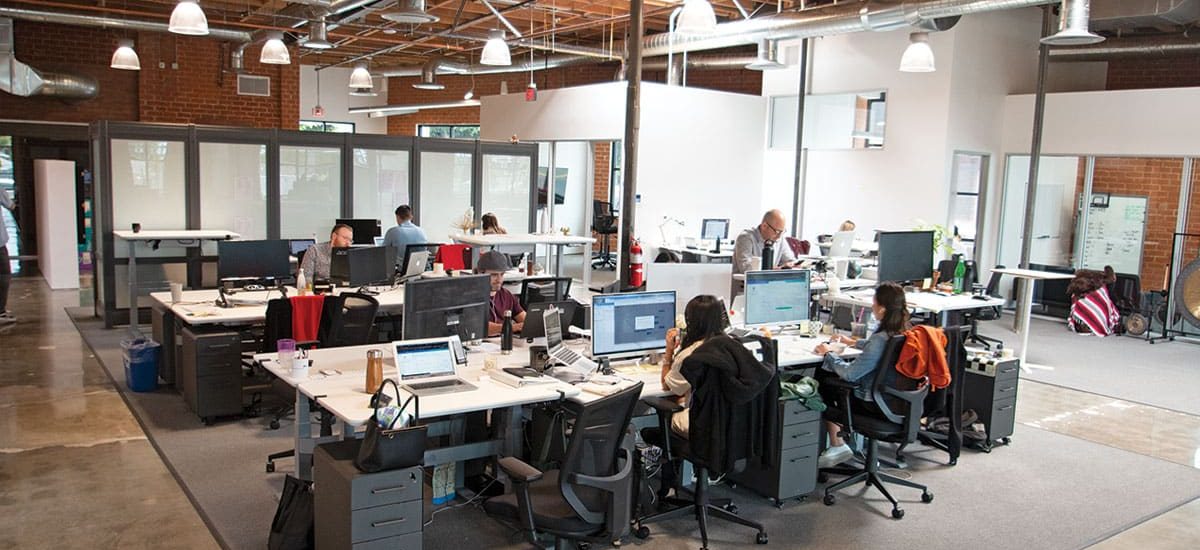



In today’s digital age, web design has evolved from mere aesthetics to an intricate art form that requires seamless collaboration between designers, developers, marketers, and clients. The days of solitary work are long gone as web designers now thrive in collaborative environments that foster growth, learning, and out-of-the-box thinking. Discover how working together enhances creativity, boosts productivity, and ultimately leads to exceptional results.
Collaboration lies at the heart of every successful web designer’s workspace. It is a culture that thrives on open communication, shared ideas, and collective problem-solving. When designers work in an environment that encourages collaboration, they are able to tap into their creativity more effectively.
In a collaborative workspace, feedback is not only welcomed but actively sought out. Designers bounce ideas off one another, seeking different perspectives and insights. This exchange of thoughts leads to innovative solutions and pushes the boundaries of what can be achieved.
The collaborative culture within a web designer’s workspace also nurtures a sense of ownership and accountability for the final product or project outcome. Each team member has a stake in ensuring its success since they have contributed to its development through active participation and idea generation.
By embracing a collaborative approach to web design, teams are better equipped to tackle complex challenges head-on. They leverage each other’s strengths and skills to overcome obstacles efficiently while producing high-quality work that meets clients’ expectations.
Collaboration is at the heart of any successful web designer’s workspace. When designers come together to share their ideas, skills, and expertise, amazing things can happen. A collaborative environment offers a multitude of benefits that can enhance both individual and team performance.
One of the key advantages of working in a collaborative environment is the opportunity for knowledge sharing. Designers can learn from one another’s experiences and tap into a collective pool of knowledge. This constant exchange stimulates creativity and innovation, leading to fresh ideas and unique solutions.
It’s clear that creating a collaborative culture within web designer workspaces has numerous benefits – from fostering creativity through knowledge sharing to enhancing problem-solving abilities as part of a unified team effort.
There are various types of interaction that contribute to the overall success of a web designer’s workspace. These interactions not only foster teamwork but also enhance creativity and productivity.
One type of interaction is brainstorming sessions. This is where team members come together to share ideas, discuss concepts, and problem-solve collectively. Through the exchange of different perspectives and insights, innovative solutions can be generated.
Collaboration can also take place through collaboration tools such as project management software or online platforms specifically designed for teams to collaborate effectively. These tools facilitate communication, file sharing, task assignment, and progress tracking – all essential elements in maintaining a cohesive workflow. Click here for a custom logo for football teams by Adobe Express.
Creating a collaborative workplace is essential for fostering creativity, productivity, and innovation among web designers. Here are some tips to help you build a workspace that encourages collaboration:
1. Foster open communication: Encourage team members to share ideas, opinions, and feedback freely. Create an environment where everyone feels comfortable expressing their thoughts without fear of judgment.
2. Embrace diversity: Bring together individuals with different backgrounds, skills, and perspectives. This diversity will result in a richer pool of ideas and solutions.
3. Provide flexible spaces: Design your workspace to include areas that facilitate both individual focus work and group collaboration. Have dedicated meeting rooms or breakout areas where teams can brainstorm and collaborate on projects.
4. Promote teamwork: Organize regular team-building activities such as workshops or social events that encourage colleagues to bond outside of work tasks. This helps foster better relationships and enhances collaboration within the team.
5. Lead by example: As a leader or manager, demonstrate the value of collaboration by actively participating in discussions, encouraging others’ input, and providing opportunities for professional growth through teamwork.
By implementing these tips into your web design workspace culture, you can create an environment where collaboration thrives naturally – resulting in enhanced creativity, increased productivity levels, and ultimately successful projects!
Creating a collaborative culture in a web designer’s workspace is essential for fostering creativity, innovation, and productivity. By promoting open communication, teamwork, and shared goals, this type of environment can lead to incredible results.
Remember that building a collaborative environment takes time and effort but will ultimately drive success both individually for your designers’ careers as well as collectively for your business endeavors!